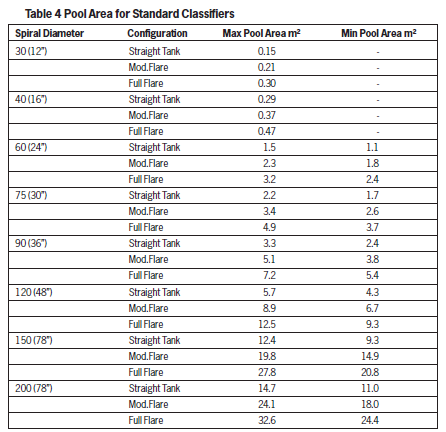For size control of particles finer than 1 mm, we are moving out of the practical range of conventional screens. Classification is the process of separating particles by size into two or more products according to their behaviour in air or water (liquids). Classification methods.
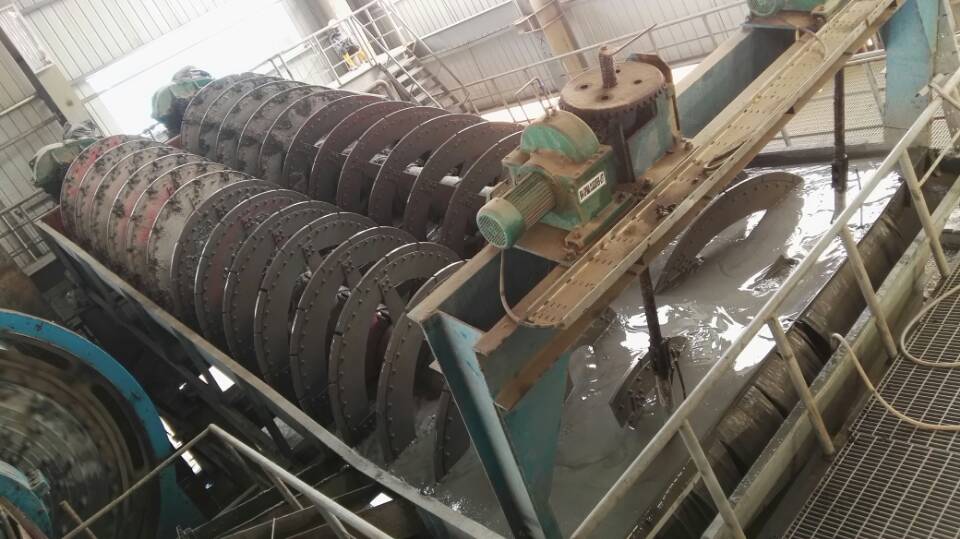
• Wet classification with Hydrocyclones using separation by centrifugal force covering the size range of 100 –10 micron (typical)
• Wet classification with Spiral classifiers using separation by gravity covering the size range of 100- 1000 micron (typical)
• Dry classification using separation by centrifugal force covering the range of 150 –5 micron (typical).
Wet classification – fundamentals
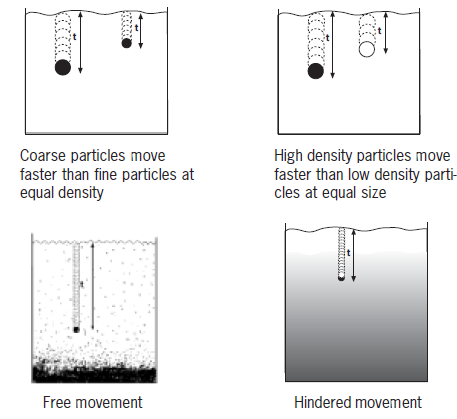
If a particle has no interference from other particles it moves faster than a particle surrounded by other particles due to increased density and viscosity of the slurry. This is called free and hindered movement and is valid both for gravity and centrifugal classification.
Hydrocyclone
Centrifugal forces classify solids by size (mass). High mass particles closer to outer wall reporting to underflow .Low mass particles closer to the centre reporting to overflow.
Hydrocyclone design
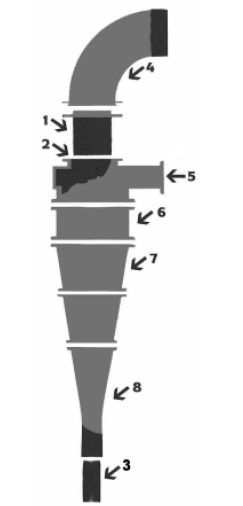
1. Vortex finder
2. Inlet head
3. Spigots (apex)
4. Overflow elbow
5. Feed inlet
6. Barrel
7. Cones
8. Cone extension
Hydrocyclone applications
Although the hydrocyclone by nature is a size controlling machine the number of applications in mineral are many
• Classification in grinding(ball mill) circuits
• Dewatering and thickening
• Desliming and washing
• Enrichment of heavy minerals
What is the d50 value?
Any Hydrocyclone is inefficient. Coarse particles will report to overflow and fine particles to underflow
The nominal cut point for a cyclone is therefore defined as d50, i.e. the size of particle that has 50% chance of reporting either to underflow or overflow. This cut point is used in selecting the correct cyclone diameter, see below.
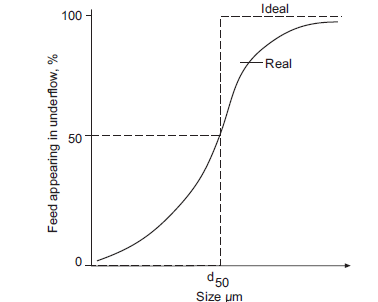
Feed density
For efficient classification it is important that the feed density is as low as possible (free moving particles). 10-15 % solids by volume Good efficiency
15-30% solids by volume Deteriorating efficiency > 30 % solids by volume Inefficient
Feed pressure will influence the cut point, higher pressure – lower cut point (look out for wear).
Select hydrocyclone diameter
Once d50 is defined the hydrocyclone diameter can be selected from the following table: Example above = 48 micron = cyclone dia 250 mm (10”).
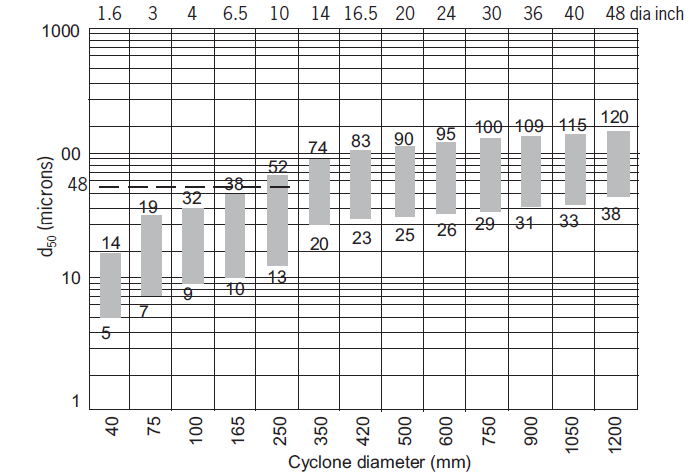
Select quantity of hydrocyclones
The volumetric capacity of a cyclone depends upon its diameter. A larger cyclone will handle a larger capacity. Once the required diameter has been defined then the number of units needed to handle the given feed flow can be determined from the following table. Example above: 250 mm dia. cyclone = flow rate 100 m3/h/ unit.
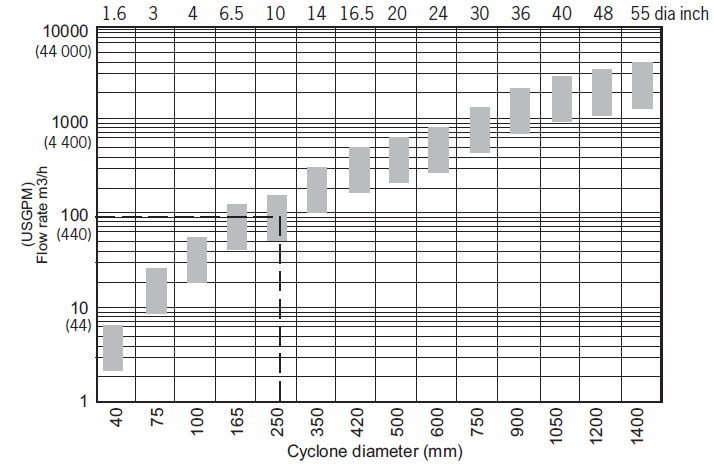
Spiral Classifier
By combining a gravity settler of rectangular section with a sloped transport spiral for the sediment - we have got a spiral classifier.
Spiral Classifier – Design
The design of a spiral classifier is simple and robust with few moving parts. A reliable machine for tough classification duties in the 100-1000 micron range.
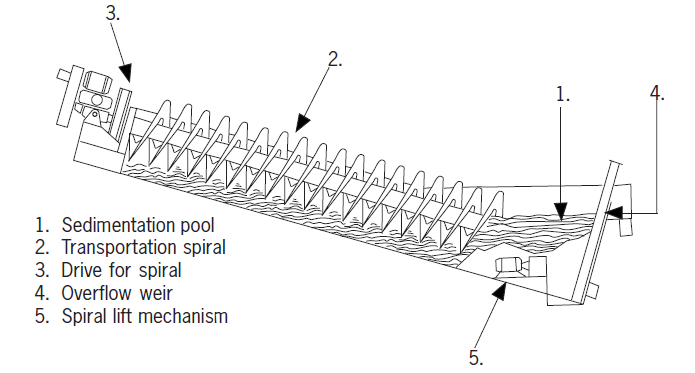
Spiral Classifier design features:
• Replaceable wear shoes,
• Submerged bearing for spiral
• Tank options and adjustable weir for full flexibility in pool area and classification cut point (cp)

Spiral Classifier-applications
As for the hydrocyclone this size control machine has many practical applications in mineral processing
• Closed circuit grinding (primary classification with cyclone as secondary)
• Dewatering
• Sand recovery
• De-sliming
• Heavy media densifying
Spiral Classifier – Sizing, metric
Please refer to your Support Centre for detailed Spiral Classifier selection. A preliminary sizing can be made by using the following method.
Spiral Classifier selection is a three part process. First the spiral diameter, the number of pitches and the rotational speed are selected to handle the predicted quantity of coarse (raked) product. Then the overflow pool area is selected to achieve the correct cut-point at the predicted overflow rate and pulp density. Finally the coarse fraction (=sand) compression pool area has to be checked.
1. Establish mass balance
Use metric system! 1 metric tonne = 1.1 short ton
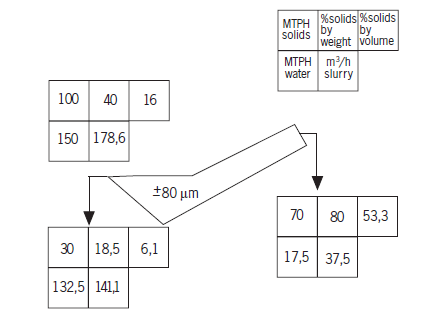
2. Select spiral peripheral speed and sand raking efficiency
Peripheral speed is chosen to avoid the spiral running too fast causing excessive turbulence in the separation zone or reducing the drainage time for the coarse fraction.
The sand raking efficiency reflects the fact that a spiral is not a 100% efficient transport device and some particles will tend to slide back along the screw particularly when handling wet or fine materials.
Selection is made from Table 1 below:
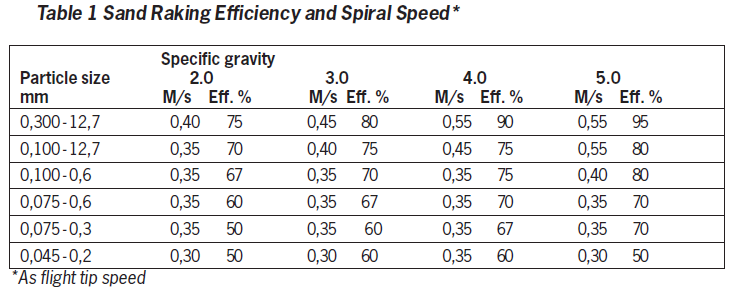
3. Calculate ‘corrected’ Rake Capacity

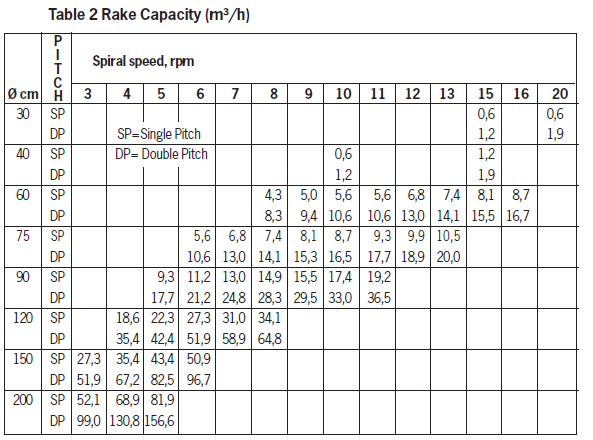
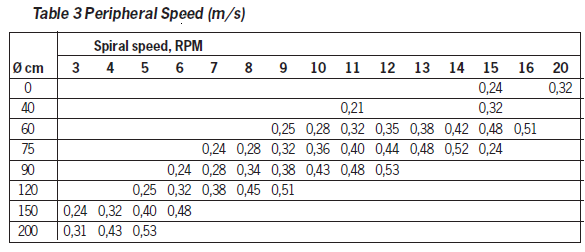
5.Particle Settling Rate
Read particle settling rate from the diagram below according to equivalent particle size and percent solids by volume in the overflow (from the mass balance).
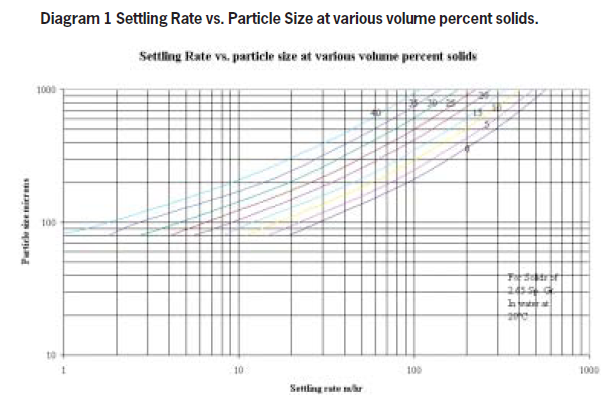
6. Selection
Select the smallest unit that satisfies the requirements of both spiral diameter, overflow pool area and compression pool area. Machine dimensions and motor power are taken from the Technical Data Sheet.
